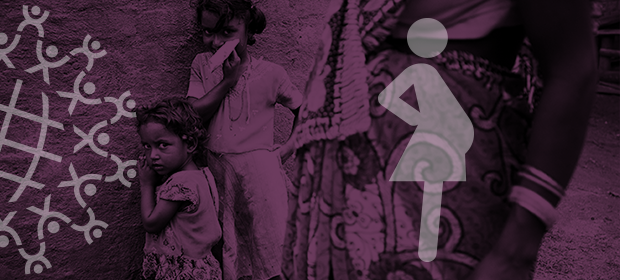Where We Work
See our interactive map


It'll take a nation to change the numbers for Indonesia's moms and babies.
As Indonesia celebrates its 73rd year of independence, most people are aware of the country’s impressive economic development over the past few years. But perhaps fewer are aware that, every hour, across this massive archipelago, two mothers and eight newborns die.
The country still faces unacceptably high levels of maternal and newborn mortality. This is a multi-faceted and complex issue, which requires collaboration between all elements of society to ensure effective measures are taken to improve maternal and newborn wellbeing.
The Intercensal Survey of 2015 estimated that the maternal mortality is 305 per 100,000 live births. The Indonesia Demographic and Health Survey 2017 data suggests newborn deaths are 15 per 1,000 live births.
The country aims to reduce the maternal mortality ratio to less than 70 per 100,000 live births.
Despite less maternal and newborn mortality between 1990 and 2015, Indonesia fell short of the Millennium Development Goals that require countries to reduce mortality rates by three quarters. In Asia, Indonesia ranks behind Bangladesh, Cambodia, and Myanmar on this front.
Reducing maternal and newborn deaths is part of the Sustainable Development Goals (SDGs), a United Nations-led agenda guiding countries worldwide to work together to tackle global challenges over the next 15 years. Under Goal 3, countries agree to ensure healthy lives and promote well-being for all.
To achieve this goal, Indonesia plans to increase access to high-quality health services and implement universal health coverage. The country aims to reduce the maternal mortality ratio to less than 70 per 100,000 live births, and to reduce neonatal mortality rates to as low as 12 per 1,000 by 2030.
In Indonesia, pre-eclampsia or eclampsia, which is a pregnancy-induced hypertension; post-partum hemorrhage; and other infection-related obstetric emergencies; are the leading causes of maternal mortality. Complications from preterm birth, asphyxia—the condition when the body is deprived of oxygen—and low birth weight are the major causes of newborn deaths. These deaths are preventable.
A critical way to prevent these deaths is to improve the quality of maternal and newborn care. Improving quality of care is a multidimensional effort, and requires partnerships between health care providers, managers, communities, and policy makers.
According to a recent World Bank report on private sector supply-side readiness, as well as reports from the U.S. Agency for International Development’s Expanding Maternal and Neonatal Survival project, primary maternal health services across public and private facilities face major quality challenges in service readiness, in terms of medicine, basic obstetric care, and referrals.
Public and private health providers can work together to provide pregnant women and newborns with high-quality care. This means access to skilled care with evidence-based practices delivered in a humane, respectful, and supportive environment.
Ensuring high-quality care means paying attention to health facilities’ physical infrastructure, human resources, skills, and capacity to manage both normal pregnancies and complications. Part of high-quality care is a better referral system so that when an emergency arises, families, midwives, and facilities can ensure pregnant women have access to advanced emergency services, including emergency transport as well as high-quality health facilities ready to manage difficult pregnancies.
It will take a nation to ensure every pregnant woman and newborn can access high-quality care.
Quality care is also an opportunity for communities. Communities play a critical role to create demand for, and access to, high-quality maternal and newborn services. Families and midwives can empower and increase the knowledge of pregnant women and their families so that they understand the importance of good care, as well as their rights under key programs such as the national health insurance progam.
For example, pregnant women should be aware of the Ministry of Health’s recommendation for an expectant mother to receive four antenatal care visits during pregnancy, high-quality services during labor, delivery with a skilled professional, and three post-partum visits for mothers and their newborns after delivery.
They say it takes a village to raise a healthy child. But it will take a nation to ensure every pregnant woman and newborn can access high-quality care. The time is now to come together and use evidence to improve quality of care and reduce preventable maternal and newborn deaths—contributing to a healthier Indonesia.
This piece was first published in the Jakarta Post on August 15, 2018.
IntraHealth International is a strategic nonprofit affiliate of DAI Global Health and a key partner on the DAI-led Jalin program, USAID's flagship maternal and newborn health project in Indonesia.
Get the latest updates from the blog and eNews




